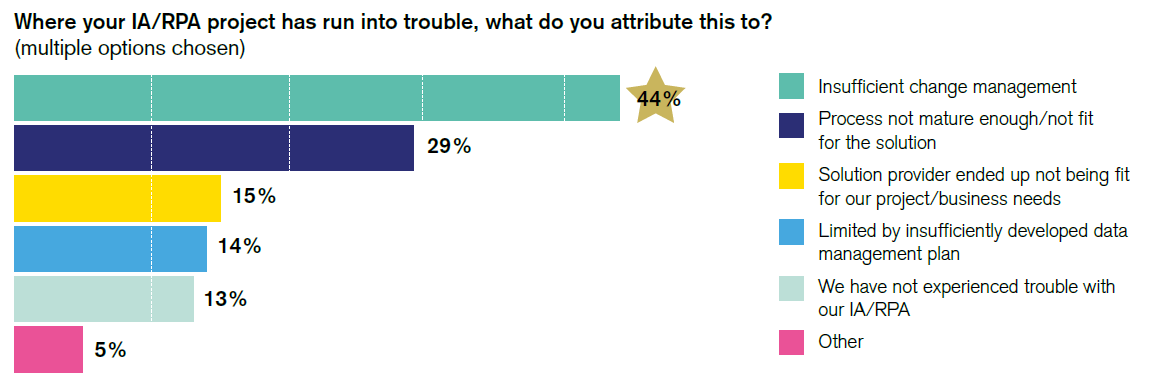In its Global IA Report, the Shared Services and Outsourcing Network (SSON) said that lack of effective change management is one of the leading causes of RPA failure. Despite this, change management is still woefully neglected in automation implementations. The report examines the critical requirements in supporting change across IT, Business Process, and Organization & People – some of which are not intuitive and others frankly unique.
The challenge of adopting intelligent automation across the enterprise is so familiar because it reflects what we already went through in the heyday of CI (continuous improvement) or ERP (enterprise resource planning). Thirty years ago, everyone approached ERP from a technical perspective. It was only after a decade of often spectacular failures that the awareness dawned that its successful implementation was about more than that. Technology, as it turned out, is the easy part.

The benefits derived from advancing intelligent automation technology depend on change management that enables and facilitates its adoption and deployment. Like all transformative programs, the data tells us that change management turns out to be the key differentiator between success and failure. In this report, we’ve turned a critical eye toward the specific nature of this transformation and what good change management looks like to ensure the success of your automation transformation.
IT Change Management: four areas of focus, some new and some evolved.
1. Infrastructure and provisioning as a foundation
2. Reconsider change review process to systems of record
3. Cross-application support teams
4. Multi-skilled helpdesk with decision-making support to managers
Business Process Change Management: likely something new, with three things to remember.
1. Consider impact of requirement change on automated process flow
2. Business change management committee provides discipline around change execution
3. Extend business change management to areas outside immediate range of control
Organizational Change Management: six key recommendations.
1. Change leader/sponsor development
2. Training
3. Stakeholder analysis and engagement
4. Resistance management
5. Developing solutions jointly
6. Selecting outcomes that align with stakeholder objectives

